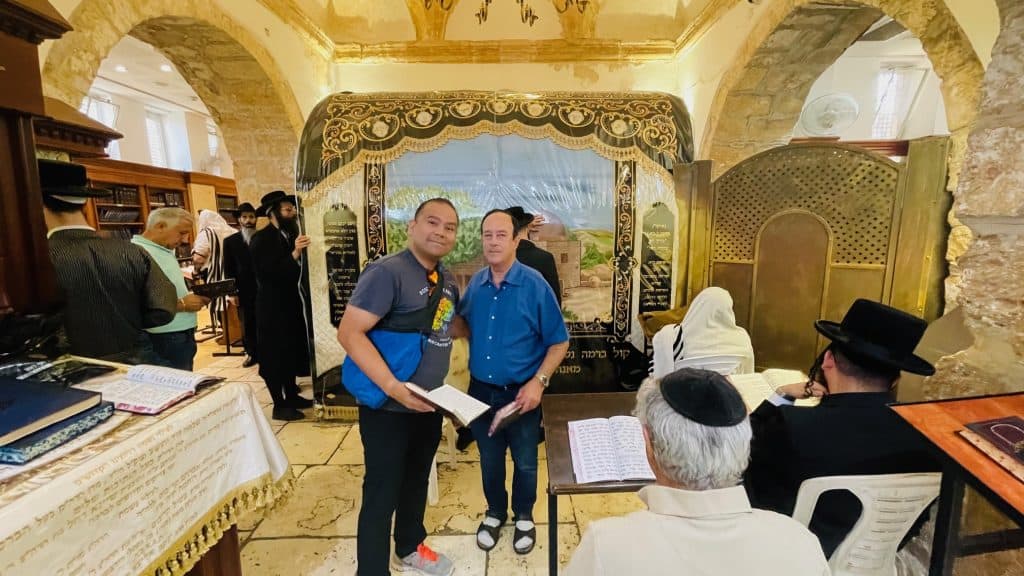Rachel’s Tomb is a building located at the northern entrances of Bethlehem, south of Jerusalem. In fact, ancient traditions of over 1,700 years identify the place as the site where our Rachel was buried. Therefore it is considered a sacred place in the eyes of Jew; Christians and Muslims.

Moreover, over the generations, the tombstone in the place and the structure above it have undergone many changes documented in the extensive passenger literature. The appearance of the tomb structure was one of the famous symbols of the Land of Israel; and it appeared on Jewish artifacts, stamps and holy books. Scholars disagree about the accuracy of the identification of the burial site. Today, Rachel’s Tomb is used as a place of worship for Jews who visit the place throughout the year; and especially on the 11th of Cheshvan, which is accepted in the Jewish tradition today of Rachel’s death.
Rachel’s Tomb in the Bible
According to the Book of Genesis was buried Rachel on Bethlehem Road:
“19 So Rachel died and was buried on the way to Ephrath (that is, Bethlehem).”
(Genesis 35)
And also in Chapter 48:
“7 As I was returning from Paddan, to my sorrow Rachel died in the land of Canaan while we were still on the way, a little distance from Ephrath. So I buried her there beside the road to Ephrath” (that is, Bethlehem).”
(Genesis 48)
So these verses correspond to the accepted tradition according to which Rachel’s tomb is located near Bethlehem, south of Jerusalem. On the other hand, in the book of 1 Samuel, it is said that Rachel’s tomb is on the border of the tribe of Benjamin; while the city of Bethlehem is located in the land of the tribe of Judah and not on the border of the land of Benjamin. So which is true?

Scholars of the Land of Israel disagree about the correct identification of the place of the tomb. The references in the book of Genesis have supported the identification accepted for many generations at a site north of Bethlehem. In contrast, the references in the Book of Samuel and the Book of Jeremiah served as the basis for a theory that cites midrashim and was supported by evidence mainly from Charles Clermont-Gnu, Noga Hareuveni, and others, identifying Rachel’s tomb at a site north of Jerusalem near the Hizma junction, at the entrance east of Jerusalem. The Arabs know the place as the Kovor Bnei Yisrael (Tomb of the Bnei Yisrael).
First Records of the Tomb in Historical Sources
So the first sources that identify Rachel’s tomb in northern Bethlehem are Christian: The New Testament from the 1st century. Also, Eusebius of Caesarea and the “Traveler from Bordeaux” from the 4th century. Even Hieronymus (St. Jerome), who lived in Bethlehem in the 5th century, mentioned Rachel’s tomb next to Bethlehem.
Bethelehem Day Tour

Also, the Map of Madaba from the 6th century depicts Efrata near Bethlehem, and next to it is written. Apart from the biblical sources, the earliest Jewish reference that identifies Rachel’s tomb north of Bethlehem; is an 11th-century Midrash. It describes the tombstone of Rachel in the same way as other descriptions of his time.
The Jewish traveler Rabbi Benjamin of Tudela, who visited Israel in 1170, describes Rachel’s tomb in his book ‘The Travels of Benjamin’:
“And the tombstone is made of eleven stones for the twleve sons of Jacob and on it is a dome built on four pillars and all the Jews who pass by there sign their names on the tombstone stones”
More Records of the Tomb in the Middle Ages
A similar description also appears in other travelers in the Middle Ages: Among them, a student of the Ramban (Nachmanides). In fact, the descriptions also include an explanation of why there are only eleven stones and not twelve. But in a description of yet another Ramban student from the end of the 13th century, he does not mention the pillars and the dome, which may have been destroyed by the Muslims who smashed and destroyed many Crusader-Christian structures in the Land of Israel. Or structures that seemed to see them as such. Even the Ramban himself visits the tomb, and In his commentary on of the Bible, he mentions his visit to Rachel’s Tomb and explains that following the visit, he returned to his initial interpretation that the place of Rachel’s burial was on the border of Benjamin.
Rachel’s Tomb in Our Days
The structure in its current form dates from the Ottoman period and is situated in a Christian and Muslim cemetery dating from at least the Mamluk period. When Sir Moses Montefiore renovated the site in 1841 and obtained the keys for the Jewish community; he added an antechamber; including a mihrab for Muslim prayer; to ease Muslim fears. According to the 1947 United Nations Partition Plan for Palestine, the tomb was to be part of the internationally administered zone of Jerusalem.
But the Hashemite Kingdom of Jordan occupied the area, which prohibited Jews from entering the area. Following the Israeli occupation of the West Bank in 1967, though not initially falling within Area C, the site has come under the control of the Israeli Ministry of Religious Affairs. Rachel’s Tomb today is the third holiest site for Jews, and forms and has become a real cornerstone of their Jewish-Israeli identity. On my guided tours of Bethlehem, I like to stop there and show my guests the ancient site.

